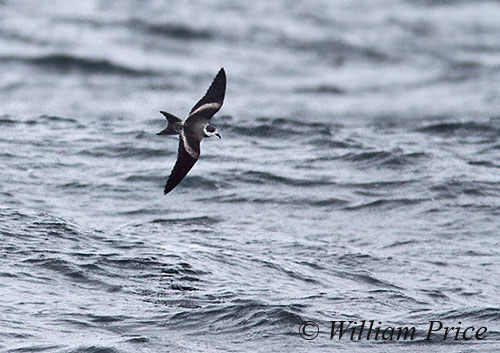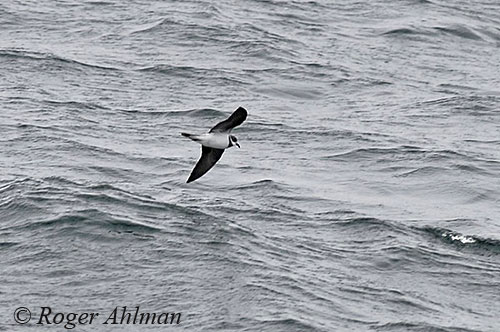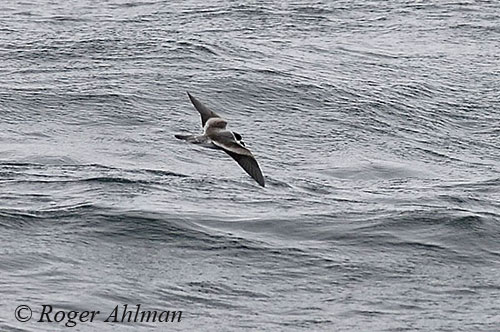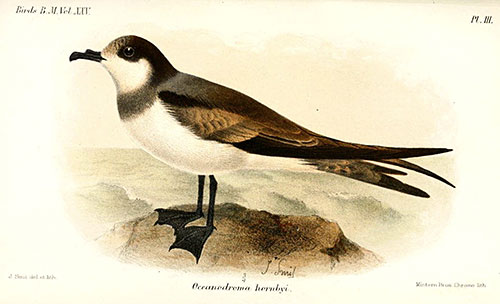
Fr: Océanite de Hornby
Ang: Ringed Storm-Petrel - Hornby's Storm Petrel
All: Kragenwellenläufer
Esp: Paíño Acollarado
Ita: Uccello delle tempeste dal collare
Nd: Gekraagd Stormvogeltje
Sd: halsbandsstormsvala
Photographers:
Roger Ahlman
Pbase Galleries Peru and Ecuador
William Price
PBase-tereksandpiper & Flickr William Price
Illustrator:
Joseph Smit (1836–1929)
Source of the illustration:
Catalogue of the birds in the British Museum (1896). Volume 25 (Plate. III)
https://www.biodiversitylibrary.org/page/8379464
Text by Nicole Bouglouan
Sources:
HANDBOOK OF THE BIRDS OF THE WORLD vol 1 by Josep del Hoyo-Andrew Elliot-Jordi Sargatal - Lynx Edicions - ISBN: 8487334105
Petrels, Albatrosses, and Storm-Petrels of North America: A Photographic Guide De Steve N. G. Howell – Editor: Princeton University Press, 2012 – ISBN: 0691142114, 9780691142111 – 482pages
OISEAUX DE MER – Guide d’identification de Peter Harrison – Editions Broquet (Canada) – ISBN-10 : 2890004090 – ISBN-13 : 978-2890004092
A new breeding site of Hornby's storm petrel
Hornby’s Storm-Petrels Have Found a Home in the Driest Place on the Planet
First breeding site record of Hornby’s Storm Petrel Oceanodroma hornbyi in the Atacama Desert, Chile
Elusive seabird breeding grounds discovered in Chilean desert
First nest colony of Ringed Storm-petrel found in the Atacama Desert
First Record of Ringed Storm-Petrel (Oceanodroma hornbyi) for North America
Ringed storm petrel - Golondrina de la tempestad de collar (Oceanodroma hornbyi)
Wikipedia, the free encyclopaedia
Ringed Storm-Petrel or Hornby's Storm-Petrel
Hydrobates hornbyi
Procellariiformes Order – Hydrobatidae Family
INTRODUCTION:
The Ringed Storm-Petrel or Hornby's Storm Petrel ranges in the Humboldt Current off the coasts of South America. It is relatively common at sea off Ecuador, Peru and Chile.
The name of the species pays tribute to Admiral Sir Phipps Hornby.
The Ringed Storm-Petrel breeds inland in the Atacama Desert, and even in some cities and towns and also in the Andes. Outside this period, it occurs in the cold, deep waters of the Humboldt Current, at the edge of the continental shelf. Like most storm-petrels, it feeds on small fish.
The Ringed Storm-Petrel is threatened by light pollution, mining, roads and power lines around the breeding sites in the Atacama Desert. The species is currently listed as Near Threatened.
DESCRIPTION OF THE BIRD:
Biometrics:
Length: 20-22 cm
Weight: 33-46 g (40 g)
The upperparts are grey on the upper back, becoming brownish on lower back, scapulars and lesser wing-coverts. The whitish to pale greyish-brown median coverts form a conspicuous pale wing band, becoming browner in worn plumage. The flight-feathers are brownish-black.
The strongly graduated tail and the uppertail coverts are greyish-brown.

On the underparts, chin, throat, belly and undertail-coverts are white. We can see a broad, dark grey band across the upper breast. On the dark underwing, the wing-coverts are ashy-brown.
On the head, forehead and hind collar are white. Crown, nape and ear-coverts are sooty, almost black, forming a dusky hood.
The bill is black. The eyes are brown. Legs and webbed feet are black.
Male and female are similar.
The juvenile resembles adult, but the dark areas are duller and slightly paler than in adults.
RANGE:
The Ringed Storm-Petrel is found exclusively in the Humboldt Current, about 40-300 km off the coasts of S Ecuador, Peru and N Chile.
The breeding grounds are little known, but a colony is known on Pampa del Indio Muerto in the Atacama Desert.
Two other sites but with only one nest have been found in Salar de Quiuña and Salar de Navidad.
Several potential breeding sites indicated by dead and grounded birds occur throughout the Atacama Desert stretching for 960 km through N Chile.
HABITAT:
At sea, the Ringed Storm-Petrel favours the deep waters and the cool upwellings of the west of the Humboldt Current, usually around the edges of the continental shelf, between 30 and 500 km offshore.
During the breeding season, the nests are placed in gypsum formations. The breeding sites are aggregated, especially in the Pampa del Indio Muerto, or scattered in the desert.
Individuals have been seen in random places in cities and towns throughout the range.
CALLS AND SONGS: SOUNDS BY XENO-CANTO
At the breeding colonies, the Ringed Storm-Petrel produces some combinations of purrs, chatters, squeaks and yelps. These calls are used in territorial behaviour and to attract mates.

BEHAVIOUR IN THE WILD:
Information about the diet of the Ringed Storm-Petrel is currently lacking, but it is suspected to forage with the Elliot's Storm-Petrel which is known to feed mainly on small fish and planktonic crustaceans.
It typically forages mainly on the wing, by pattering, dipping and snatching prey from water surface.
The Ringed Storm-Petrel breeds in colonies, but also in scattered nests.
The breeding sites are inland, especially in the Atacama Desert located up to 70 km from the sea shore. The species nests in natural cavities formed by gypsum.
The nesting behaviour is unknown but as in related species, both adults probably share the nesting duties.
The Ringed Storm-Petrel probably moves after breeding, leaving the colonies in the desert to reach the Tropical Pacific waters off Peru and Ecuador.
The Ringed Storm-Petrel spends most of its life in flight over the deep, cold waters of the Humboldt Current.
It flies low above the water, performing quick, abrupt wingbeats and erratic movements. When they are flying in groups, the flight becomes more fluttering. They can be seen occasionally sitting on the water.

REPRODUCTION OF THIS SPECIES:
The territories are established in November, and the laying occurs in December.
The Ringed Storm-Petrel nests in colonies or in scattered nests, the later usually less attracted by predators than within a colony.
It breeds in the Atacama Desert up to 70 km from the sea. It nests in natural cavities formed by gypsum.
The choice of the Atacama Desert is an efficient adaptation. The lack of rain makes it inhospitable for potential nest predators.
The female lays a single white egg. Both parents incubate by day, probably in stints allowing them to reach the sea for food. Information is needed concerning the nesting behaviour.
However, from an observation, the fledgling goes to the entrance of the cavity the last days before leaving the nest. It performs wingbeats to learn how to fly and reach the sea.
The fledglings are sometimes affected and grounded by light pollution.
PROTECTION / THREATS / STATUS:
The Ringed Storm-Petrel is threatened by light pollution and several tens of birds are grounded around the cities when they are flying.
Commercial fishing may impact the species by reducing the food resources.
Mining, wind farms, powerlines and energetic activities destroy the habitat.
In 2004, Brooke suspected the global population to number at least thousands of individuals, but probably much more. The size of the population is placed in the band 500,000/800,000 mature individuals. This population is declining as a result of the previous described threats.
The Ringed Storm-Petrel is currently listed as Near Threatened.

Joseph Smit
(1836–1929)